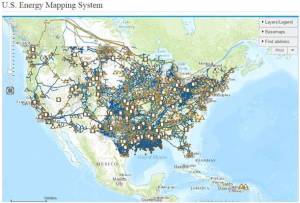With all the attention that the Keystone Pipeline has been receiving lately, you would think that pipelines are a new or novel way to move oil and other products. The reality is, pipelines are virtually everywhere in the United States.
The rather “unwieldy” map below from the United States Energy Information Administration provides a graphic of how connected we are by pipelines.

There are hundreds-of-thousands of miles of pipelines across the United States. Knowing where they are may be an important part of your environmental due diligence (Image Credit: US Energy Mapping Systems).
There are, in fact, an estimated 185,000 miles of liquid petroleum, 320,000 miles of gas transmission, and 2,000,000 miles of gas distribution pipelines in the United States. And, as you might suspect, with the sheer number of pipelines, there are releases… most of which don’t make the headlines.
Pipelines and Releases
In a report from the U.S. Department of Transportation, Pipeline and Hazardous Materials Safety Administration, they state that 1,337 release incidents occurred in the US over a two-year period ending in July 2012. They also state that for hazardous liquid pipelines, “the average volume of a pipeline release is 29,230 gallons.” The chances of having an above-average release volume were around 1 in 5.
These pipeline leaks become part of the public conscience when there is a high-profile leak, such as the Enbridge Energy’s Line 6B. And, when we hear about a significant incident, we may wonder… Are there any pipelines near my property or, perhaps, near a property I am considering purchasing?
You can actually go on line yourself and check to see if there is a pipeline near your property. The National Pipeline Mapping System provides an interactive map of gas transmission and hazardous, liquid-pipeline locations. It’s actually quite interesting, and I was surprised to see how many pipelines are in my neighborhood.
Pipelines and Environmental Due Diligence
So what do you do with this information about pipelines? Knowing the surrounding pipelines, and, perhaps more importantly, the “track record” of the pipeline owners in responding to incidents could be part of your overall due diligence when you are considering purchasing commercial property. Ultimately, this is just data that you and your team of advisors may want to consider as you evaluate various risks.
If you have any questions about evaluating environmental risks on your commercial/industrial property, including Phase I/II ESAs, feel free to contact me (mresch@dragun.com) at 248-932-0228, ext 133.
